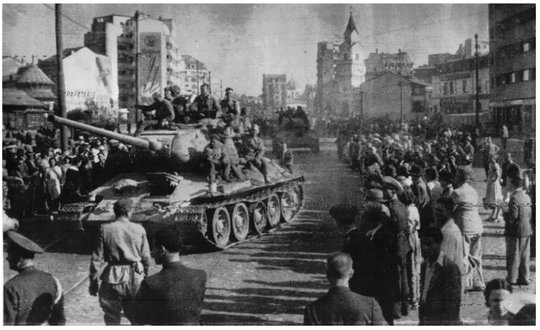Chapter Six
Antonescu’s Romanian Armour
It is not generally appreciated that a Romanian armoured division fought vainly alongside the Germans in the winter of 1942 at Stalingrad in an effort to stem the Soviet counter-attack that trapped the German 6th Army. At the outbreak of the Second World War in 1939 Romania created its very first tank regiment; this was combined with a motorised rifle regiment two years later to form an armoured brigade.The 1st and 2nd Armoured Regiments were combined in April 1941 and were mainly equipped with Czech LT-35 and some CKD light tanks. The Romanian Army also had six cavalry brigades (1st, 5th, 6th, 7th, 8th and 9th), some of which were issued with light tanks.
Bad blood between the Romanians and Hungarians forced them into Hitler’s evil embrace. In 1940 Romania lost Bessarabia and Bukovina to the Soviet Union, followed by half of Transylvania to Hungary and the southern Dobrudja to Bulgaria.That same year the Romanian king abdicated in favour of his son, but pro-Nazi Marshal Ion Antonescu became the power behind the throne. In October 1940 the German 13th Motorised Infantry Division crossed Hungary into Romania, followed by the 16th Panzer Division two months later, to ensure Romanian ‘security’.
Six months before Operation Barbarossa Hitler secretly allocated Romania a key role. He directed:
It will be the task of Romania to support the attack of the German southern flank, at least at the outset, with its best troops; to hold down the enemy where German forces are not engaged; and to provide auxiliary services in the rear areas.
‘Of course I’ll be there from the start,’ exclaimed Antonescu when told of Adolf Hitler’s invasion of the Soviet Union, just ten days before it was due to commence on 22 June 1941. ‘When it’s a question of action against the Slavs, you can always count on Romania,’ he added, little realising the bloody consequences. Antonescu willingly provided the largest number of the satellite troops and his finest forces including his fledgling armour units. General von Rundstedt’s Army Group South included the equivalent of fourteen Romanian divisions.
The Romanians had almost 300 tanks in June 1941, comprising thirty-five Czech CKD/Praga R-1 light tanks, 126 Czech LT-35s (known as the R-2 in Romanian service), seventy-three French R-35s and sixty French FT-17s. Few of these were suitable for front-line service. While the LT-35 was capable of taking on the various Russian light tanks such as the T-26,T-37,T-40 and T-60, up against anything heavier it was in trouble. Although reasonably armoured at the front to a thickness of 35mm, the LT-35’s 37mm anti-tank gun was simply not capable of taking on the Russian T-34/76 armed with a 76.2mm or the similarly armed KV-1.
The 1st Armoured Regiment with the LT-35s was the first Romanian unit to take part in the invasion of the USSR, though the 2nd Armoured Regiment was held back because of the condition of its R-35s. Many of these French tanks had been appropriated from the fleeing Polish Army, in particular the Polish 21st Armoured Battalion, and lacking spares were not committed to the invasion of Russia. Similarly the wholly inadequate R-1s were held back with the Royal Cavalry.
In 1941 Romania fielded its 3rd Army, consisting of the Mountain Corps and Cavalry Corps totalling six brigades, as well as the 4th Army consisting of four divisions. Altogether these forces totalled about 150,000 men, but later with reinforcements were to swell to over 300,000. Under pressure to supply more manpower, Romania also drafted 2,000 rapists, looters and murderers–never the best basis for an army. Romanian troops wore a khaki uniform with very distinctive Dutch-style helmets, so were clearly distinguishable from their German allies.
On 22 June 1941 the Romanians pushed into southern Russia. The 3rd Army’s Mountain Corps fought with the German 11th Army in the Crimea and the Cavalry Corps with the 1st Panzer Army. The 4th Army with a 5:1 numerical superiority attempted to capture Odessa on 10 August, but made little headway against determined Red Army resistance. The attack petered out five days later, but was resumed on the 20th and for a month the Romanians struggled to get within 9 miles of the city. Headway was finally made when the Germans swung down into the Crimea. After suffering an appalling 98,000 casualties, the exhausted 4th Army was withdrawn in October 1941 for refit.
Hitler’s tank deliveries to Romania, as in the case of Hungary and Bulgaria, were modest, totalling less than 350 throughout the war. During 1942 Romania received twenty-six replacement LT-35s, eleven Panzer IIIs and eleven Panzer IVs courtesy of Berlin.To address their need for a mobile anti-tank weapon the Brasov factory was instructed to convert some LT-35s into self-propelled mounts by installing captured Russian 76mm guns. A number of Russian T-60 light tanks were also supplied by the Germans fitted with a 76mm and these were designated TACM (Tun autopropulsat cu afet mobile 76.2mm), R-2 or T-60 respectively. The cavalry brigades also became divisions in 1942.
During the summer of 1942 Romanian forces were involved in the attack on Sevastopol and fought across the Kerch Straits, while others were in the Caucasus with the 3rd Panzer Army. Crucially by the autumn the fate of Hitler’s stalled ambitions for conquering the USSR rested firmly on the shoulders of two ill-equipped Romanian armies bereft of tanks and anti-tank guns.
Fatefully the Romanian 3rd Army, consisting of nine divisions under Colonel-General Dumitrescu, came back into the line in October 1942 to the north-west of Stalingrad. To their left was the Italian 8th Army, which served as a buffer between them and the Hungarians, such was the national enmity between the two. Another Romanian Corps, part of the 4th Army, moved into place on the southern flank followed by a second in November providing six divisions to the German 4th Panzer Army. Perhaps as window-dressing Hitler suggested that General Constantinescu’s 4th Army should take charge of the 4th Panzer Army, despite the fact that the Romanians were incapable of commanding such forces. He also proposed that the 3rd and 4th Romanian armies along with the German 6th Army should form Army Group Don under Marshal Antonescu.The forthcoming Russian offensive prevented such plans being implemented.
At 6.30am on 19 November 1942 3,500 Russian guns opened up on the Romanian 3rd Army’s positions.Then came the Soviets’ dreaded T-34 tanks and most of the Romanian defenders took fright and fled.The Russians broke through in two places. This was achieved by Lieutenant-General Romanenko’s 5th Tank Army launching itself from the bridgehead south-west of Serafimovich and Major-General I.M. Chistyakov’s 21 st Army attacking from the Kletskaya bridgehead.
The Romanian generals called on their tanks to try to save the day.The Romanian 1st Tank Division and 7th Romanian Cavalry Division were thrown into the fight to halt the 5th Tank Army. However, the Romanians’ inadequate Czech tanks were easily brushed aside and the 5th Romanian Corps HQ overrun. While some of the Romanian troops fled, most simply threw away their weapons and surrendered.
Romanian troops made little effort to disable or wreck their abandoned vehicles and equipment. German dive-bomber pilot Hans Rudel, flying above the battlefield witnessed the disintegration of the 3rd Romanian Army:
What troops are those coming towards us? Masses of brown uniforms–are they Russians? No, Romanians. Some of them are even throwing away their rifles in order to be able to run faster… we have now reached our allies’ artillery emplacements. The guns are abandoned, not destroyed. The ammunition lies besides them.
General von Weichs, commander of Army Group B on which 6th Army, 4th Panzer and the Romanian, Hungarian and Italian forces relied, issued the following orders:‘The situation developing on the front of the 3rd Romanian Army dictates radical measures in order to disengage forces quickly to screen the flank of 6th Army and to assure the protection of supplies …’ He went on to order units to bolster the Romanians, not realising the Russians were planning to attack his right flank the very next day.
In reality the Germans were too busy fending off Russian attacks to worry about the fate of the trapped Romanians. General Mazarini, 5th Division commander assumed overall command of the 3rd Army pocket and after conferring with his fellow officers accepted the Russian offer of surrender on 23 November.The Soviet 21st and 5th armies captured 30,000 officers and men, including several generals as well as much of their equipment. General Mihail Lascar with the remains of four divisions found himself trapped between Chir and Kletskaya. The Russians called on him to surrender, but he directed 4,000 men to try to reach the 48th Panzer Corps before handing himself over.
The Soviet 26th Tank Corps’ advance guard seized a bridge over the Don on 26 November. The German guards mistook the attack for an exercise using captured Russian tanks and the armour rumbled over the bridge. Kalach lay just 2 kilometres away, but the German defenders were not overwhelmed until Russian reinforcements arrived. By the end of November the remnants of the Romanian 3rd Army had been driven back between Chernyshevskaya to the north and Oblivskaya to the south.
Far to the south-east the Romanian 4th Army suffered a similar fate. Just twenty-four hours after the Soviet South-Western and Don Fronts had opened the offensive, the 51st, 57th and 64th armies of the Stalingrad Front joined the attack. At 10.00am on 20 November Soviet artillery opened up. Soldiers of the 20th Romanian Infantry Division fought bravely against the advancing 64th Army but with completely inadequate anti-tank guns that did little to hinder the Soviets. Major-General Tolbukin’s 57th Army swung toward Kalach, while on his left flank the 64th under Lieutenant-General Shumilov drove on Gavrilovka and Varvarovka. In the path of Major-General Trufanov’s 51st Army lay the Romanian 4th Army. His objective was Abganerovo, well behind the Romanian lines. Within a few hours 10,000 Romanian troops had been taken prisoner.
Following the Romanian Army’s mauling at Stalingrad the remnants of the Romanian 1st Tank Division and Cavalry Divisions were regrouped for refitting. To make good Antonescu’s losses Hitler sent fifty 38(t)s, thirty-one Panzer IVs and just four StuG III assault guns. First to arrive were the 38(t)s, which were delivered in March 1943 and used to re-equip the 1st Tank Regiment.
The 1st Tank Division spent 1943–44 re-equipping and training. Only in 1944 did Hitler despatch any significant numbers of tanks to the Romanians, consisting of 100 Panzer IV and 114 StuG assault guns.The 1st Tank was re-established along German panzer division lines in April 1944 and given the title Romania Mare (Great Romania). Equipped with German tanks it returned to the Eastern Front and continued to resist the Red Army until Romania defected in August 1944. Panzer IVs of the 2nd Armoured Regiment then fought alongside the Red Army in Hungary and ended up in Czechoslovakia the following year, where Romanian R-35s were deployed armed with Russian 45mm anti-tank guns.
Similarly the 1st, 5th, 7th and 8th Cavalry Divisions all suffered heavy losses during the fighting around Stalingrad. The 7th was beyond repair and disbanded, while the others were reformed during 1943. In particular the 5th was supposed to become a motorised division but its tanks and other vehicles were never supplied. It had been intended that the 8th Cavalry Division become a motorised division in late 1942, but these plans were halted by Stalingrad. In July 1944 it was decided to use it to create Romania’s 2nd Armoured Division, but this was not completed before the Romanians defected to the Russian camp.The German instructors manning the 4th Armoured Regiment seized the panzers supplied by Hitler and used them to help cover the German withdrawal from Romania.
The Romanians lost 350,000 men fighting the Soviets and another 170,000 fighting the Germans and the Hungarians. Overall Antonescu’s armour made little difference to the Romanian Army’s brave but ultimately futile efforts on the Eastern Front.
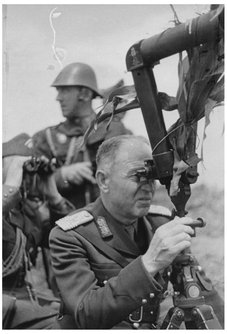
General (later Marshal) Antonescu watching Romanian troops in action. He sought to protect Romania’s security in the face of territorial encroachments from Bulgaria, Hungary and the Soviet Union by siding with Hitler.
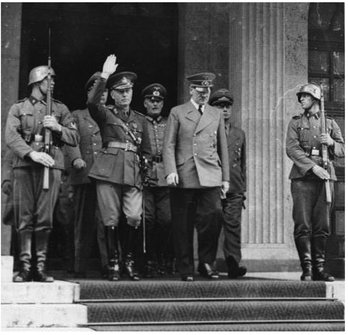
Antonescu with Hitler. He willingly provided the largest number of satellite troops and his finest forces including his fledgling tank units.The 1st Armoured Regiment was the first Romanian unit to take part in the invasion of the Soviet Union, while the Romanian 1st Tank Division was all but destroyed at Stalingrad.
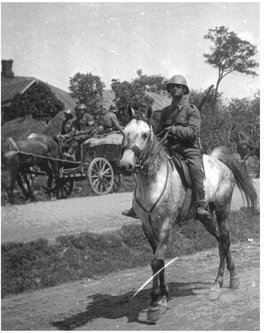
In 1941 the Romanian 3rd Army included a cavalry corps.The Army had barely started the process of mechanisation when the Second World War broke out and this was to cost it dearly.
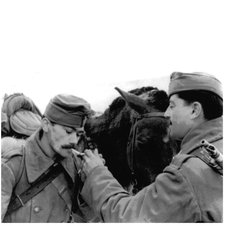
Romanian or Hungarian cavalrymen enjoy a cigarette. While the Romanian Army had numerous cavalry divisions, it had only two armoured regiments.
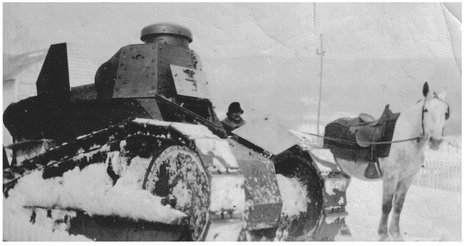
The Romanian Army also had about sixty French FT-17 light tanks; they were not suitable for frontline service or the Russian winter.
Romania had just seventy-three Renault R-35s, some of which were acquired from the defeated Polish Army. Due to the tanks’ condition the Romanian 2nd Armoured Regiment was not committed to the invasion of Russia.
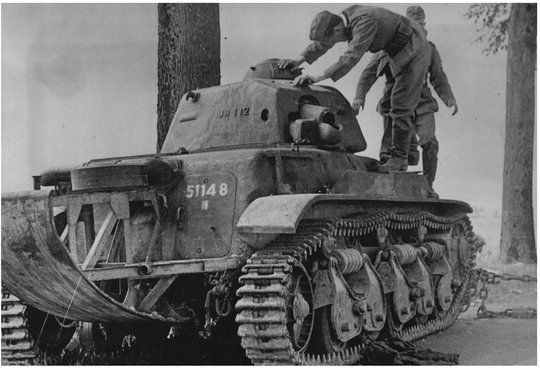
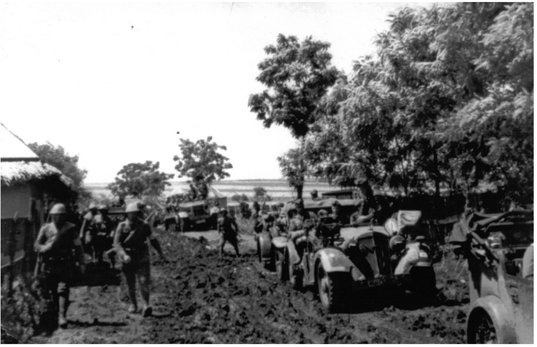
Romanian Army vehicles struggling through the mud. Just visible in the background is what appears to be a German-supplied Sd Kfz 7 half-track and a Kfz 12 medium car in the foreground.
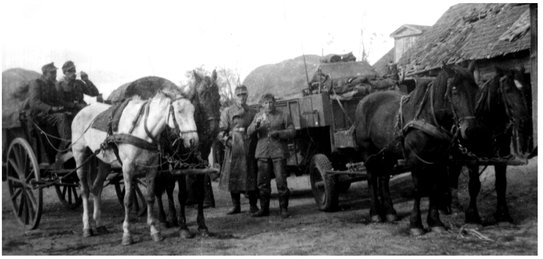
Like all the other East European satellite armies the Romanians were largely dependent on horse-drawn transport, which greatly slowed them down and they struggled to keep up with the advancing Germans.
Romanian infantry clambering over Soviet defences in the Crimea; initially they were supported by a single regiment of Czech LT-35s which had been supplied prior to 1939. The 2nd Armoured Regiment was held back because of the condition of its French-built tanks.
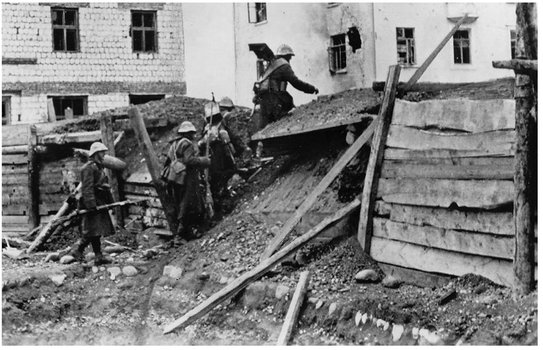
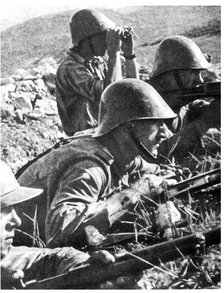
Romanian infantry during the Battle for Sebastopol in June 1942. While the three furthest from the camera are wearing the M1939 ‘Dutch’ helmet, the man nearest on the left wears the older French ‘Adrian’ model.
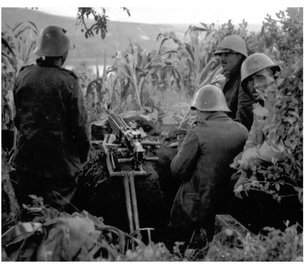
This Romanian machine-gun crew manning a stretch of the Don, lacking adequate tank and anti-tank support, faced a grim future during the winter of 1942. When the crushing Soviet offensive fell on the Romanian 3rd Army in November 1942 the Romanian 1st Tank Division was unable to save it from destruction.
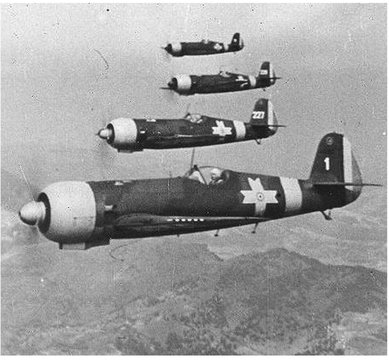
The Romanian air force also played a significant role in supporting the Romanian Army on the Eastern Front, deploying indigenously-built fighters and bombers.
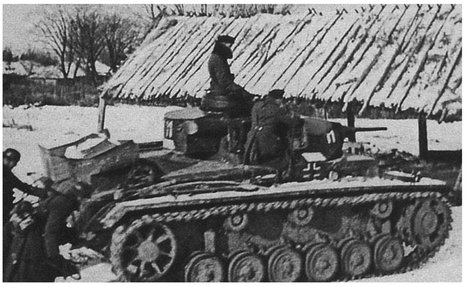
Initially the Romanian armoured forces received twenty-six former Czech LT-35s in 1942. The first German-built tanks consisting of just eleven Panzer Mk IIIs followed later the same year.
Romanian anti-tank gunners engaging Soviet tanks.
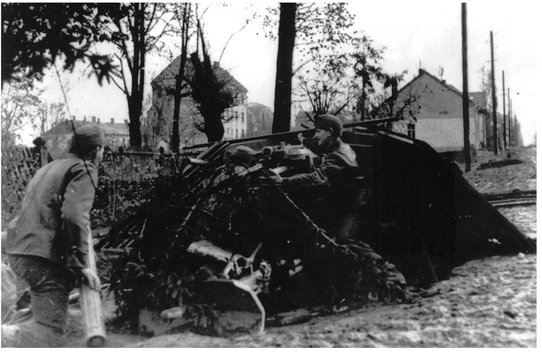
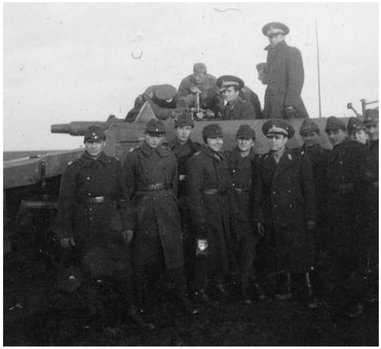
Romanian officers and men examine a German Sd Kfz 251/19 heavy support half-track armed with a 75mm gun. This was unofficially known as the Stummel or ‘stump’.
Hitler supplied the Romanians with 142 Panzer Mk IVs during 1942–44, some of which were subsequently turned on the German Army. Romania had no indigenous tank capability and received 350 tanks and assault guns from Hitler during the war.These were used to create two tank divisions, the second not being completed by the time the Romanians defected.
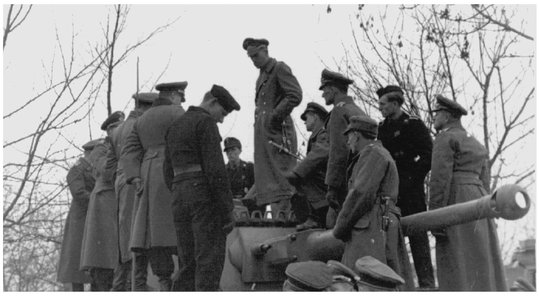
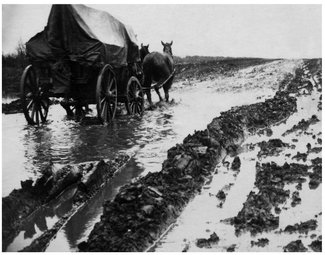
The mud caused by the Russian winter and spring effectively paralysed most of the armies fighting on the Eastern Front.
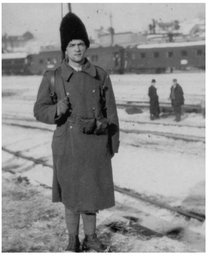
This was the reality of the Romanian Army on the Eastern Front: ill-equipped, ill-trained and ill-motivated conscripts who would rather be at home than relegated to security duties guarding rail yards.
Russian peasants look on impassively at Romanian corpses.The collapse of the Axis armies around Stalingrad heralded the beginning of the end for Hitler’s dream of defeating the Soviet Union. His reliance on the East European satellite armies proved to be his undoing.
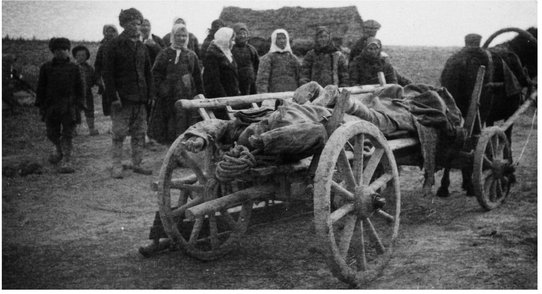
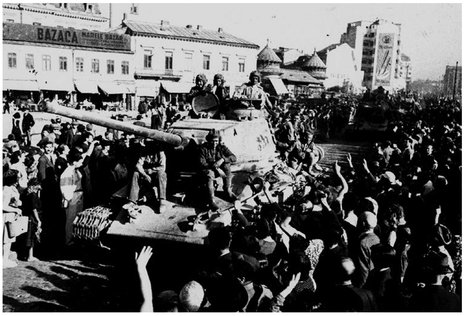
T-34/85 tanks of the Red Army’s 4th Guards Corps after defeating the Germans in the Ploesti area rolled into Bucharest on 31 August 1944. By this point the Romanians had swapped sides and Panzer Mk IVs belonging to the Romanian 2nd Armoured Regiment fought alongside the Russians in Hungary and Czechoslovakia against their former allies.
